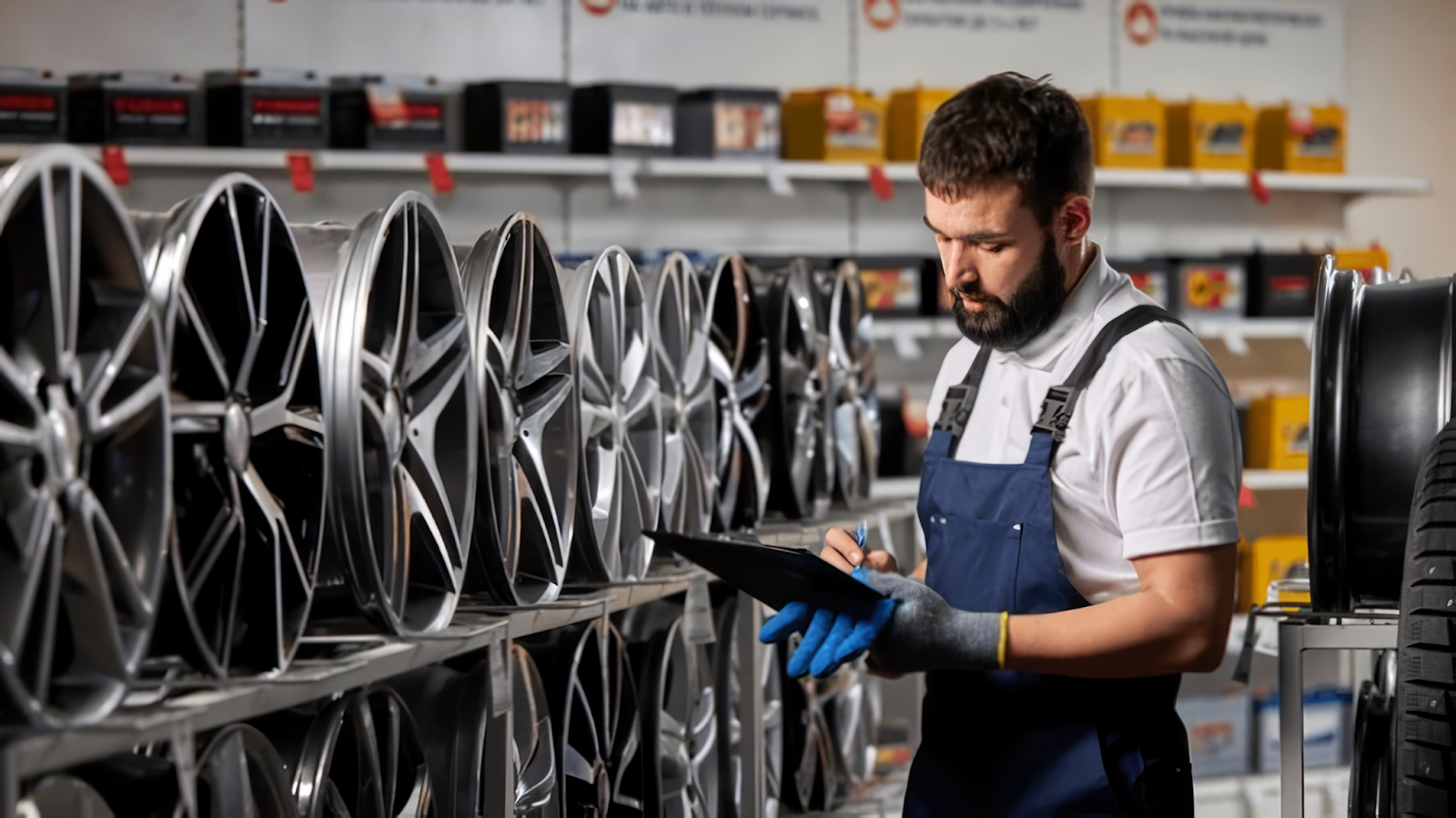Introduction
When it comes to auto parts sourcing or replacing, one of the first choices you’ll need to make is OEM vs aftermarket. Original Equipment Manufacturer, or OEM, refers to the parts produced by the same business that makes the vehicle. Aftermarket components, on the other hand, are made by a separate business and are frequently made to work with as many different models and/or makes as possible.
In this article, we’ll compare aftermarket vs OEM parts and help you decide when to choose OEM vs aftermarket parts.
What Do “OEM” and “Aftermarket” Mean?
Let’s start by understanding the OEM vs aftermarket definitions:
- OEM (Original Equipment Manufacturer) parts are made by the vehicle’s manufacturer or an approved supplier. OEM parts are essentially identical to the ones that came with your vehicle when it rolled off the assembly line. They’re guaranteed to fit and function exactly as intended.
- Aftermarket parts are parts made by third-party companies that are not tied to the vehicle’s manufacturer. They are designed to replace OEM parts but may use different materials or designs. Some aftermarket parts are budget-friendly replacements, while others are premium upgrades.
Thus, OEM parts vs aftermarket parts is really the comparison between “original parts” and “third-party alternatives.”
It’s also worth noting that: sometimes an aftermarket part is even produced by the same factory that made the OEM version but then rebranded or sold through different channels.

Core Differences: OEM vs Aftermarket Parts
While both OEM and aftermarket parts can get the job done, there are several key factors to compare when deciding between them.
Because of this spread, there is no universal rule that “OEM is always better” or “aftermarket is always worse.” In many modern vehicles, well-known aftermarket brands deliver parts that perform nearly (or even sometimes better than) the OEM equivalent.
Common Myths & Misconceptions
It’s helpful to debunk a few popular misconceptions in the OEM vs aftermarket debate.
- “OEM is always higher quality.” Not always true. Many aftermarket parts are produced with excellent quality.
- “Aftermarket parts void warranty.” Using aftermarket parts does not automatically void your entire vehicle warranty, though warranty rules can differ from one company to another.
- “There is no difference, parts are interchangeable.” Many parts are interchangeable, but even small tolerances, material differences, or calibration can make performance or longevity vary.
- “All aftermarket parts are the same.” The fit might be similar, but materials and durability can vary, which affect the performance and longevity.
- “Aftermarket parts always fail sooner.” Not necessarily. A cheap aftermarket part may wear out faster, while a reputable one may last just as long as OEM. The difference comes down to the manufacturer – and TBP Auto is one of the trusted suppliers for the U.S. market.
>>> Read more: Aftermarket Brake Drums – Myths, Facts, and Proven Standards
Examples of OEM & Aftermarket Brands
To give you a clearer picture, our team has put together a table of some OEM vs aftermarket parts brands across different vehicle components. We’ve separated brands commonly associated with passenger cars and those for heavy-duty trucks.
*The table above is for demonstrative purposes and does not include all names in the industry. Many companies operate in both OEM and aftermarket markets. For example, Bosch supplies OEM parts and also sells aftermarket versions.
>>> Read more: OEM Quality Standards in TBP Auto's Brake Drum Manufacturing
How to Make the Decision between Aftermarket and OEM
Here’s a simple step-by-step approach you may follow when faced with an OEM vs aftermarket choice:
- Identify the part and its function. Is it critical (safety, structural, engine control) or non-critical (trim, cover, clip)?
- Check OEM vs aftermarket availability and cost. Ask your dealership or reliable parts supplier for the costs and lead time of both options.
- Research reputable aftermarket brands. Look for brands with a reputation, warranty, and certificates (e.g., FMVSS 121 certification for aftermarket parts in the U.S.).
- Compare specs and warranty. Match or exceed OEM specs (materials, tolerances), and check what warranty (if any) the aftermarket brand provides.
- Consider long-term costs. A slightly more expensive OEM part or top-tier aftermarket part might save you from replacements or failures in the future.
>>> Read more: How to Measure Brake Drums Accurately: A Basic Guide
Risks and Caveats to Watch Out For
Whether you go OEM or aftermarket, keep these risks in mind when looking for parts:
- Counterfeits: Fake parts are a growing issue and can be dangerous. They’re often disguised as OEM or big-name brands but made from poor materials. To stay safe, buy only from trusted dealers or well-known retailers. If a price looks too good to be true, it probably is.
- Fitment Issues: Some aftermarket parts are marketed as “universal” but may not fit your exact make and model. Always double-check compatibility, and avoid forcing a part that doesn’t line up.
- Electronics: Modern vehicles rely on sensors and computer systems. Cheap aftermarket electronics might fit but not function correctly, causing errors or warning lights. For complex components, OEM is often safer.
- Insurance Repairs: Insurers often default to aftermarket parts to cut costs after collisions. If you prefer OEM, review your repair estimate and check if your policy covers it.
- Warranty Details: Using aftermarket parts doesn’t automatically void your warranty, but issues can arise if a failure is linked to a non-OEM part. Some extended warranties also require OEM parts, so always read the fine print.

>>> Read more: TBP-054.1640 Brake Drum Earns FMVSS 121 - Now Even Better
TBP Auto: Your Trusted Partner in Parts Selection
At TBP Auto, we understand the real difference between OEM vs aftermarket parts and why that choice matters. Whether you’re running a fleet, managing distribution, or maintaining personal vehicles, reliability is key, but it should come with optimal costs.
Our parts are built to OEM standards, verified by international certifications, and trusted by customers worldwide.
If you’re weighing the decision between OEM and aftermarket, get in touch with us today – we will have the right solution for your vehicle’s needs.

>>> Watch more: TBP Auto Factory Tour – Inside Vietnam’s Largest Brake Drum Factory
Conclusion
While OEM parts offer strong assurance, exact fit, and peace of mind, they usually come at a higher cost and sometimes slower availability. Aftermarket parts offer flexibility, lower cost, and variety, but quality is more variable and requires care in selection.
The choice between OEM vs aftermarket parts comes down to balancing assurance and budget. OEM parts offer a comforting guarantee of exact fit and original performance, but often at a higher price. Aftermarket parts offer variety, flexibility, and savings – and in many cases, they perform just as well or even let you tailor your vehicle’s performance to your liking. Yet, they require a bit more savvy in selection to ensure you’re getting quality.
If you do your homework and choose reputable sources, you can’t really go wrong with either approach. Both OEM parts vs aftermarket parts can keep your vehicle on the road for years to come.



